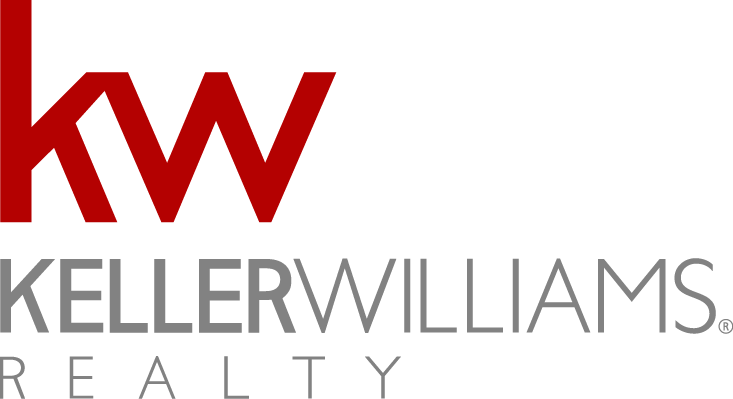The Ultimate Houston Hurricane Preparedness Guide
An essential guide for how to keep your home, your loved ones, and yourself safe during hurricane season.
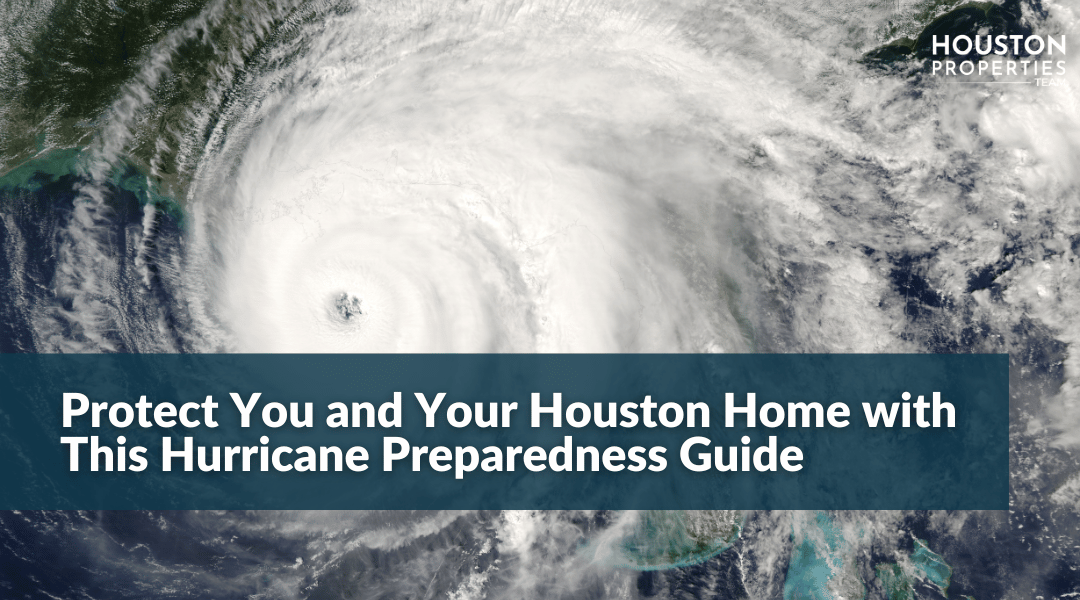
Hurricane season in Houston and across the Atlantic basin spans from June 1 to November 30, with the highest activity typically from late August through September.
Understanding how to survive a hurricane is crucial during this period. A well-prepared hurricane preparedness plan can significantly mitigate risks to life and property. Here, we provide essential guidance on creating an emergency plan, gathering emergency supplies, securing your home, and staying informed with timely alerts.
By following the steps we’ve outlined below, you can enhance your readiness and resilience in the face of potential hurricanes and tropical storms.
Hurricane season is coming! Living in Houston means prioritizing the safety of your home and loved ones during this time. Use this guide to get a comprehensive overview and a list of tips and advice for hurricane preparation, ensuring you have the information needed to stay safe and ready.
Table of Contents
- What to Do Before, During, and After a Hurricane
- Before: How to Prepare for a Hurricane
- During: What to Do During a Hurricane
- After: How to Deal with the Aftermath of a Hurricane
- Emergency Supplies
- Hurricane Hacks
- Emergency Numbers and Websites
- Flood Insurance
- Weather Terms to Know
- Saffir-Simpson Hurricane Wind Scale
What to Do Before, During, and After a Hurricane
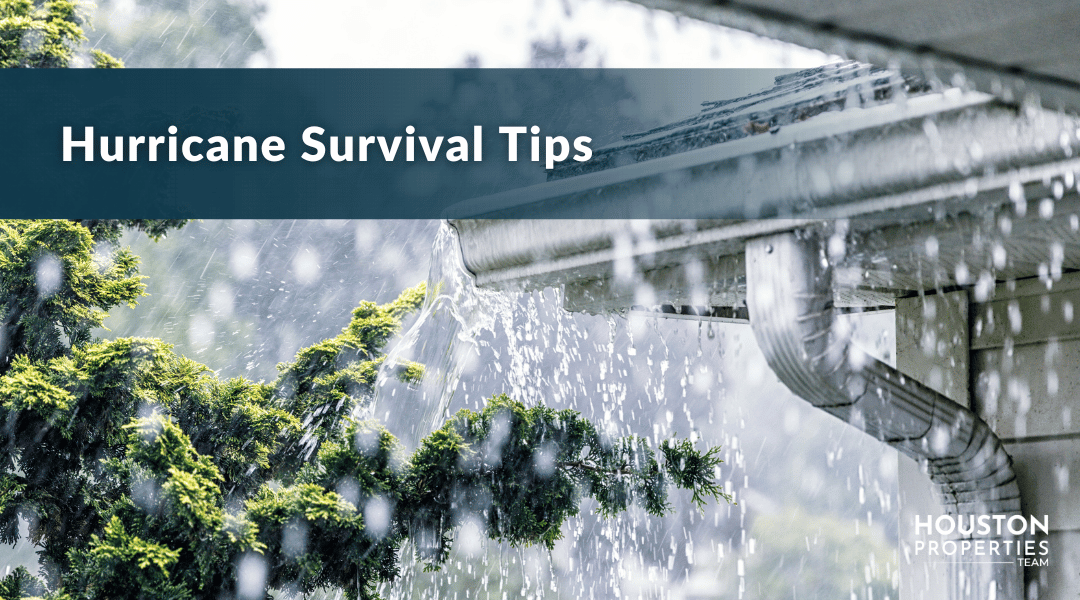
Before
- Create an emergency evacuation plan
- Make sure to sign up for local government emergency alerts
- Gather emergency supplies
- Gather and protect important personal documents
- Learn emergency skills
- Buy flood insurance
- Protect your home from wind
- Protect your home from flooding
During
- Evacuate if told to do so by authorities
- If staying at home, protect yourself from wind and flooding
- Don’t walk or drive through floodwaters
- Pay attention to emergency alerts
- Be careful with using equipment or tools that can cause a fire
- If power is lost, turn off major appliances to prevent power surges when electricity is restored
After
- If you evacuated, return home only when authorities have determined it’s safe to do so
- Make sure the tap water is not contaminated before using it for drinking or preparing food
- Throw away food that may have spoiled or come in contact with floodwaters
- If your home sustained damage, carefully inspect it before cleaning it
- Clean up safely
- If your power is out, open refrigerators and freezers only when absolutely necessary
- Prevent carbon monoxide poisoning
- Do not drive unless absolutely necessary
- Stay away from floodwaters
- Stay cautious in areas where floodwaters have receded
- Take photos of any damage to your property or vehicle for insurance purposes
Before: How to Prepare for a Hurricane
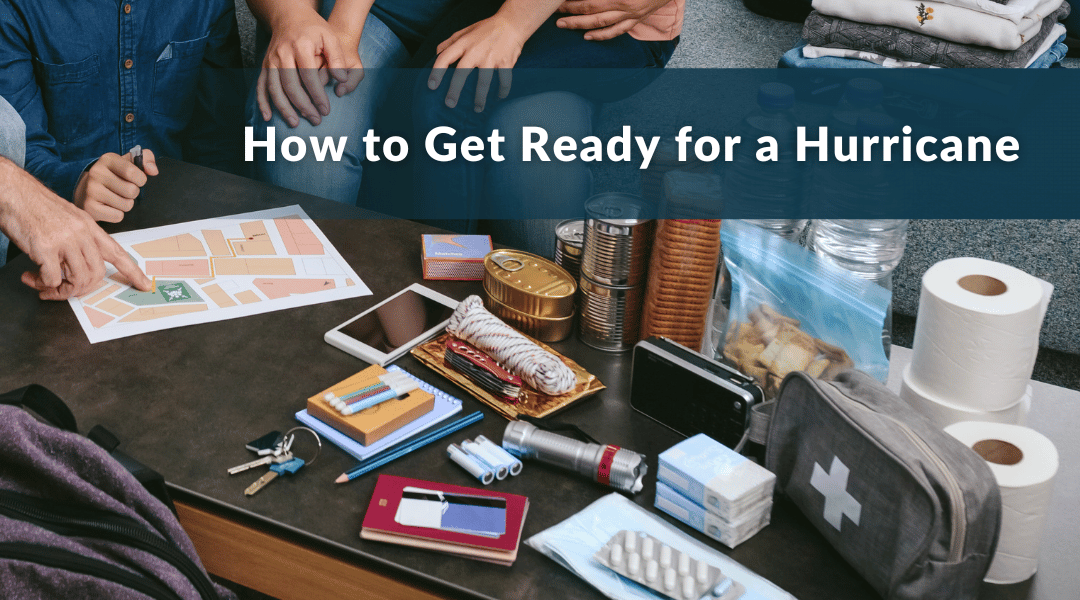
Use our hurricane preparation checklist below to ensure you're equipped and ready for any impending storm. From creating an emergency plan to securing your home, these hurricane preparedness tips will help safeguard your family and property during hurricane season.
1. Create an emergency evacuation plan
- Check with the Texas Department of Transportation to find evacuation routes.
- Find an emergency shelter location near you by downloading the FEMA app at fema.gov/mobile-app. Practice going to that location.
- Know your flood risk and prepare a plan regardless of your risk. Find out your flood zone by entering your address at the FEMA flood portal.
- Prepare a "go bag" with essential items for evacuation. Ensure it's lightweight, easy to carry, and stored in a spot where you can quickly grab it.
- Ensure all household members are familiar with and understand your hurricane plans.
2. Find a way to stay connected and get alerts
- Sign up for local government emergency alerts and have multiple ways to receive notifications. Download the FEMA app for real-time alerts from the National Weather Service for up to five locations. Register for community alerts in your area and be aware of the Emergency Alert System (EAS) and Wireless Emergency Alert (WEA), which do not require sign-up.
- Keep your cell phone charged and buy backup charging devices to power your electronics.
- Get a battery-powered radio.
3. Gather emergency supplies
- Food: Have at least a 3- to 5-day supply of non-perishable food items such as canned goods, dry cereals, granola bars, peanut butter, jelly, snacks, cookies, bread. Include pet food and infant formula if you have pets or a baby.
- Water: Have a minimum of 1 gallon of drinking water per person per day for at least 3-7 days. Make sure to store it in clean containers as the water supply may become contaminated.
- Medicine: Prescription drugs and over-the-counter drugs
- First aid: Basic first aid items such as bandages and antiseptics
- Hygiene kit: Toilet paper, hand sanitizer, alcohol, moist towelettes, disinfecting wipes, feminine supplies, personal hygiene products
- Baby supplies (if you have a baby): Diapers, wipes
- Clothes and blankets
- Batteries and chargers
- Tools: Matches, lighter, candles, flashlights, flares, can opener, a multi-purpose tool, whistle, jumper cables and other automotive tools, plastic garbage bags, duct tape
- Plastic plates, cups, and utensils
- Battery-powered radio
- IDs, credit cards and cash or traveler’s checks
- Fuel: Keep your gas tank at least half-full at all times. You may need to evacuate quickly or encounter lengthy traffic delays during emergencies.
4. Gather and protect important financial, medical, educational, and legal documents and records
- Store documents in a waterproof bag or envelope that you can easily grab.
- Create electronic copies of those documents.
5. Learn emergency skills
- First aid and CPR
- How to use a generator
- How to use essential medical equipment if you have someone in your household who needs it
6. Check your insurance coverage and buy flood insurance if needed
- Review your insurance coverage, as flood damage is not included in standard homeowner’s insurance policies.
- You can obtain the National Flood Insurance Program (NFIP) coverage through an insurance agent or directly from the NFIP.
- If your home was rebuilt through the Texas General Land Office’s Homeowner Assistance Program and is located in a floodplain, you must maintain flood insurance permanently to remain eligible for future government assistance.
7. Protect your home from wind
- Bring loose, lightweight objects (e.g. patio furniture, garbage cans, bicycles) inside. They can picked up by high winds and hurt someone.
- For objects that are too big or are not safe to bring inside (e.g. gas grills, propane tanks), anchor them outside.
- Trim or remove trees that pose a risk of falling on your home.
- Secure windows using storm shutters or pre-cut plywood. Avoid using tape, as it can create larger and more hazardous glass fragments if the window breaks.
- While doors may be shuttered, ensure at least one entry remains easily accessible. Use a security deadbolt that is at least 1 inch long.
- Strengthen garage doors and tracks, or upgrade to a hurricane-rated door for enhanced protection.
- Inspect the roof for loose or damaged shingles. Consider replacing them with shingles rated for hurricane-force winds for added durability.
- Repair or replace damaged fences.
- Inspect and install hurricane clips to secure roof trusses to side walls for added structural reinforcement.
- Consider building either a safe room that meets FEMA criteria or a storm shelter that meets ICC 500 criteria.
8. Protect your home from flooding
- Clear drains, gutters, and downspouts regularly to ensure proper water flow.
- Stockpile emergency protective materials such as plywood, sandbags, and plastic sheeting.
- Install a water alarm and sump pumps equipped with battery backup.
- Elevate the heating system (furnace), water heater, and electric panel.
- Turn off the main circuit breaker to prevent appliances from short-circuiting and to reduce the risk of electrocution.
- Install check valves in sewer lines to prevent floodwater from entering your drains.
- Waterproof the basement.
- For areas prone to frequent flooding, consider elevating your home as a precautionary measure.
During: What to Do During a Hurricane
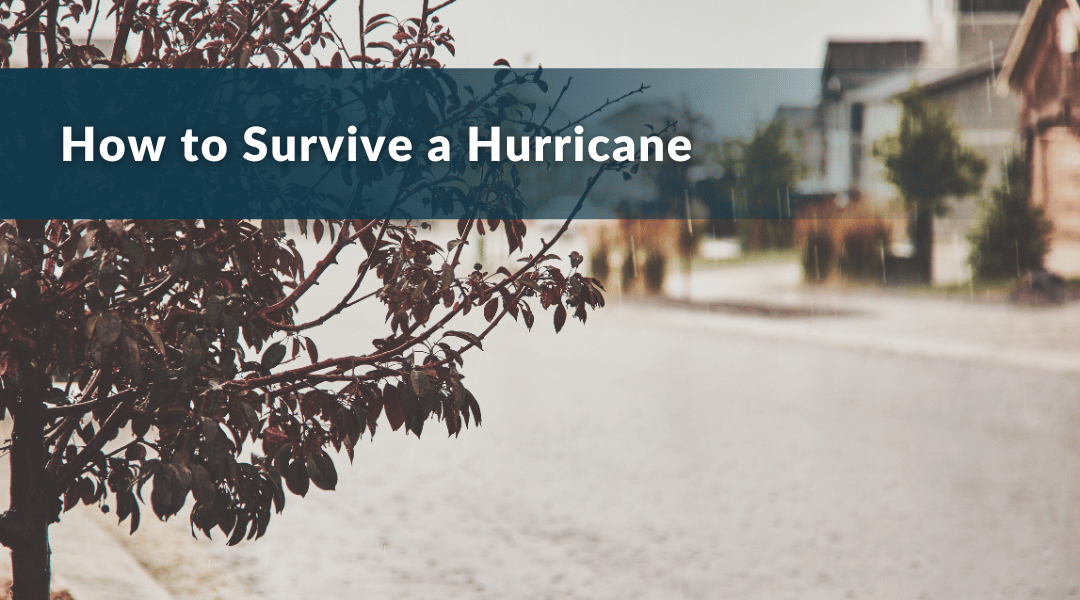
Knowing how to prepare for a hurricane is just the first step; the next is knowing what to do during a hurricane so you can safeguard lives and property.
Here are some crucial steps to follow when a hurricane strikes.
1. If you need to evacuate, do so
- If local authorities advise you to evacuate, follow their orders and leave immediately.
- Bring your emergency supply kit.
- Follow designated evacuation routes and avoid shortcuts, as they may be blocked.
- Create a plan for your pets and ensure you take them with you when you evacuate.
- Inform your family about your evacuation plans.
2. If you’re advised to stay at home, protect yourself from strong winds and flooding
- Seek shelter in a designated storm shelter or an interior room to stay safe from high winds.
- Stay indoors and away from windows and glass doors. If you're in a temporary structure, move to a sturdy building and go to a windowless room on the lowest level that is unlikely to flood.
- If you are in a flooding area, such as a coast, floodplain, near a river, or on an island waterway, move to higher ground before floodwaters reach you. Avoid climbing into a closed attic, as you may become trapped by rising water.
3. Don’t walk or drive through floodwaters
- Turn Around, Don’t Drown! Only 6 inches of moving water can knock you over, and 2 feet can sweep your vehicle away. Most flash flood fatalities happen in vehicles.
- If floodwaters rise around your car, abandon it immediately and move to higher ground.
- Don’t drive around barricades.
4. Pay attention to emergency information and alerts
5. Be careful with using equipment or tools that can cause a fire
- Never operate a generator, gasoline-powered equipment, tools, grill, camp stove, or charcoal-burning device indoors or in partially enclosed spaces. Keep these devices outside and at least 20 feet away from doors, windows, and vents.
6. If power is lost, turn off major appliances to prevent power surges when electricity is restored
After: How to Deal with the Aftermath of a Hurricane
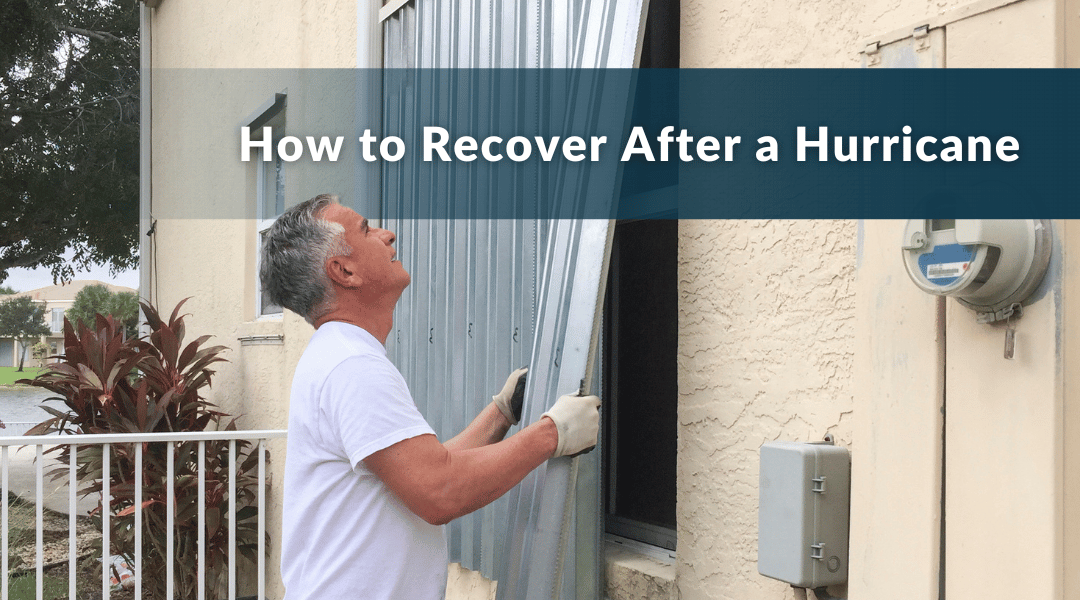
Dealing with the aftermath of a hurricane requires careful planning and safety measures. Below are some essential steps for addressing hurricane damage, including inspecting your home, ensuring personal safety, and beginning the cleanup process. Follow these guidelines to recover effectively and mitigate further risks after a hurricane.
1. If you evacuated, return home only when local officials say it’s safe to do so
2. Do not drink or prepare food with tap water until you’ve determined that it’s not contaminated
- If your water supply is contaminated, consult local authorities or have your well water tested before using it directly from the tap.
- In the meantime, boil water for at least one minute before using it for drinking or cooking.
3. Throw away food that may have spoiled or come in contact with floodwaters
- If it got wet or warm, throw it away.
- Do not eat food from a garden that has been flooded.
4. If your home sustained damage from winds or flooding, carefully inspect it before cleaning it
- If your home has experienced structural damage, turn off utilities.
- Inspect your home for sewage and water line damage.
- Look out for loose plaster, drywall, and ceilings that may collapse.
- Inspect for electrical system damage. Do not handle wet electrical equipment or operate it while standing in water. If safe, switch off electricity at the main breaker or fuse box to prevent the risk of electric shock.
- Avoid loose or dangling wires and power lines.
5. Clean up safely
- Wear protective clothing and use suitable face coverings or masks when cleaning mold or debris.
- People with asthma, lung conditions, or immune suppression should avoid entering buildings with indoor water leaks or mold growth.
- Clean and disinfect all items that have been exposed to water. Floodwater residue may contain sewage, bacteria, and chemicals.
- Remove saturated porous materials like mattresses or upholstered items, especially those showing visible fungal growth.
- Remove flooring, paneling, drywall, insulation, and electrical outlets that have been saturated by floodwater.
- Open doors and windows to ventilate and dry your home.
- When clearing heavy debris, work with a partner. Ensure you are adequately trained before operating equipment like chainsaws.
6. If your power is out, open refrigerators and freezers only when absolutely necessary
- A freezer without power can preserve food for up to 48 hours if kept closed.
- You can wrap a freezer in blankets to insulate it.
7. Prevent carbon monoxide poisoning
- Never use gasoline, propane, natural gas, or charcoal-burning devices indoors or near open windows in homes, basements, garages, tents, or campers.
- If you smell gas, evacuate the house and contact the gas supplier immediately.
8. Do not drive unless absolutely necessary
9. Stay away from floodwaters
- Avoid wading in floodwaters, as they may contain bacteria, sewage and chemicals that can cause illnesses. There might also be hazardous debris such as broken glass, metal, dead animals, sewage, gasoline, oil, and downed power lines that can electrically charge the water.
- Avoid riverbanks, bayous, and streams until the risk of flooding has completely passed. Remain vigilant for prolonged rainfall or additional flooding, even after the storm has ended.
10. Stay cautious in areas where floodwaters have receded, and watch out for snakes, fire ants, alligators, and other dangerous animals
11. Take photos of any damage to your property or vehicle for insurance purposes
- Contact your insurance company if you have property or vehicle damage to report
Emergency Supplies
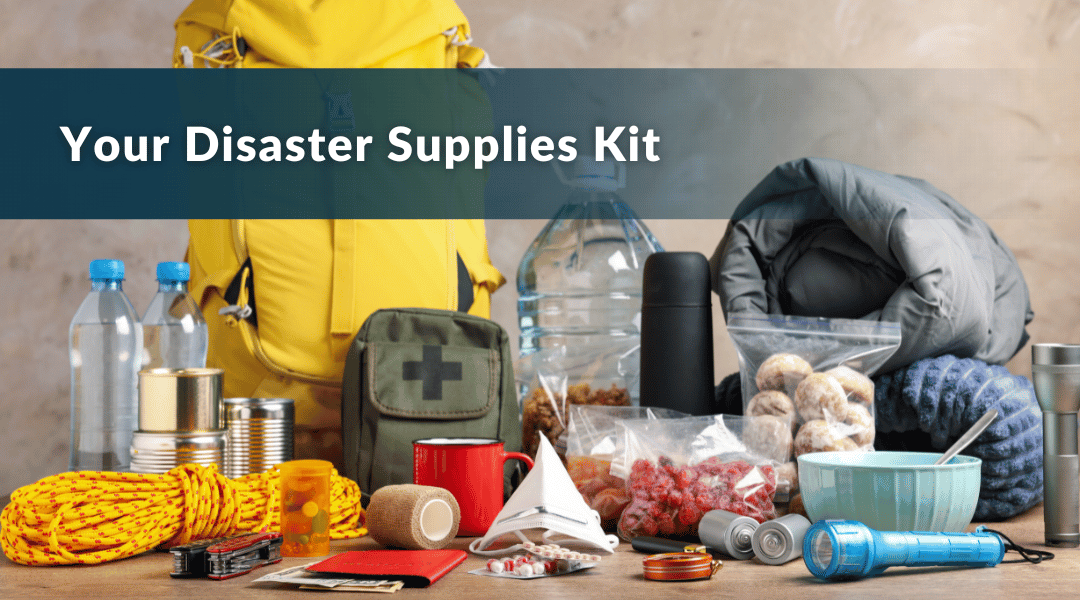
Having a well-stocked hurricane preparedness kit can make a significant difference during and after a storm. Here, we outline a comprehensive hurricane supply list to ensure you have all the necessary items.
From food and water to essential tools and medicine, having these hurricane supplies ready will help you face the challenges that come with severe weather.
- Food (At least a 3-5 day supply of non-perishable food items. This can include canned goods, dry cereals, granola bars, peanut butter, jelly, snacks, cookies, bread. If you have pets or a baby, pack pet food and infant formula as well.)
- Water (1 gallon of drinking water per person per day for at least 3-7 days. Store in clean containers as the water supply may become contaminated.)
- Medicine
- First aid items (Bandages, antiseptics, etc.)
- Hygiene kit (Toilet paper, hand sanitizer, alcohol, moist towelettes, disinfecting wipes, feminine supplies, personal hygiene products)
- Baby supplies if you have a baby (Diapers, wipes)
- Clothes and blankets
- Batteries and chargers
- Tools (Matches, lighter, candles, flashlights, flares, can opener, a multi-purpose tool, whistle, jumper cables and other automotive tools, plastic garbage bags, duct tape)
- Plastic plates, cups, and utensils
- Battery-powered radio
- IDs, credit cards and cash or traveler’s checks
- Important personal documents and records (Financial, medical, educational, and legal)
- Fuel (Keep your gas tank at least half-full at all times)
Hurricane Hacks
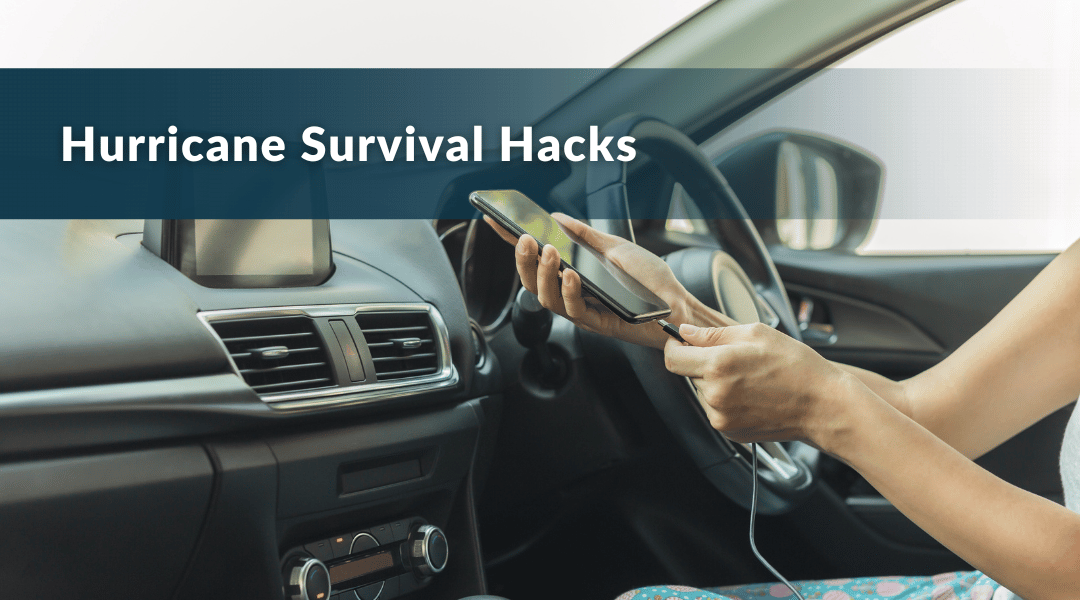
Here are the eleven best hurricane hacks that might not be widely known but can be very helpful during a hurricane:
-
Use your dishwasher for storage: Store important documents, non-perishable food, and water bottles in your dishwasher. It's water-resistant and can help protect items from flooding or water damage.
-
Fill your washing machine with ice: If you lose power, your washing machine can serve as a makeshift cooler. Fill it with ice and use it to keep perishable food cold for longer.
-
Freeze Ziploc bags with water: Fill Ziploc bags with water and freeze them. They can serve as makeshift ice packs to keep your refrigerator and cooler items cold if the power goes out.
-
Use solar garden lights indoors: Bring solar-powered garden lights indoors to provide light during power outages. They charge during the day and can be used as emergency lighting at night.
-
Create a DIY emergency toilet: If water service is disrupted, line your toilet bowl with a heavy-duty garbage bag and secure it with the seat. Use kitty litter or sawdust to absorb waste and reduce odor.
-
Charge devices with your car: Use your car to charge electronic devices like phones and tablets. Invest in a car charger adapter or a portable power inverter to convert your car's DC power to AC power.
-
Make a solar still for drinking water: In case clean water is scarce, you can create a solar still using a large container, plastic sheeting, and a collection cup. This can help distill water from any available source.
-
Keep emergency cash: ATMs and card transactions may not work during power outages. Keep a stash of small bills in a waterproof container for emergencies.
-
Turn your fridge and freezer to their coldest settings: Before the storm, set your refrigerator and freezer to their coldest settings. This helps keep food colder longer if power is lost.
-
Use a headlamp or headphones for hands-free lighting: During nighttime tasks or repairs, use a headlamp for hands-free lighting. Alternatively, wrap your smartphone in a clear plastic bag and use it with headphones plugged in—activate the flashlight for a convenient light source.
-
Download shows or movies: There won’t be much to do by way of entertainment once the internet and power go out. Download shows or movies from streaming services so you’ll have stuff to watch while waiting for the power to come back. Do the same on your kids’ devices.
Emergency Numbers and Websites

Harris County Storm Evacuation Zones and Routes: https://www.abc13.com/evacuations
Harris County Office of Emergency Management: 713-881-3100
Fort Bend County Office of Homeland Security & Emergency Management: 281-342-3411 or 281-342-6185
Montgomery County Office of Homeland Security & Emergency Management: 936-523-3900
Galveston County Office of Emergency Management: https://gcoem.org, 281-309-5002
National Weather Service Office Houston-Galveston, TX: weather.gov/hgx
FEMA: https://www.fema.gov/, https://ready.gov, 1-800-621-3362
American Red Cross: https://www.redcross.org/, 713-526-8300
National Hurricane Center: https://www.nhc.noaa.gov
National Flood Insurance Program: floodsmart.gov, 877-336-2627
Flood Insurance

Most property insurance policies do not cover flood damage, so you’ll need to buy a separate flood insurance. This is available through the National Flood Insurance Program (NFIP) in participating communities.
It takes 30 days for policies to take into effect, so it’s advisable to purchase one as soon as possible. The average annual cost of a flood insurance policy is $700, while the average cost of a flood insurance claim is $43,000.
To purchase flood insurance, call your insurance company or insurance agent. To find a provider, go to floodsmart.gov/flood-insurance-provider or call the NFIP at 877-336-2627.
The NFIP offers two types of coverage: building coverage and contents coverage. Here’s a list of what’s covered and what’s not covered.
Building Coverage:
- Electrical and plumbing systems
- Furnaces and water heaters
- Refrigerators, cooking stoves, and built-in appliances like dishwashers
- Permanently installed carpeting
- Permanently installed cabinets, paneling, and bookcases
- Window blinds
- Foundation walls, anchorage systems, and staircases.
- Detached garages
- Fuel tanks, well water tanks and pumps, and solar energy equipment
Contents Coverage:
- Personal belongings such as clothing, furniture, and electronic equipment
- Curtains
- Washer and dryer
- Portable and window air conditioners
- Microwave oven
- Carpets not included in building coverage (e.g., carpet installed over wood floors)
- Valuable items such as original artwork and furs (up to $2,500)
Not Covered:
- Temporary housing and additional living expenses incurred while the building is being repaired or is unable to be occupied
- Property outside of an insured building. For example, landscaping, wells, septic systems, decks and patios, fences, seawalls, hot tubs, and swimming pools
- Financial losses caused by business interruption
- Currency, precious metals, stock certificates and other valuable papers
- Cars and most self-propelled vehicles, including their parts
- Personal property kept in basements
Weather Terms to Know
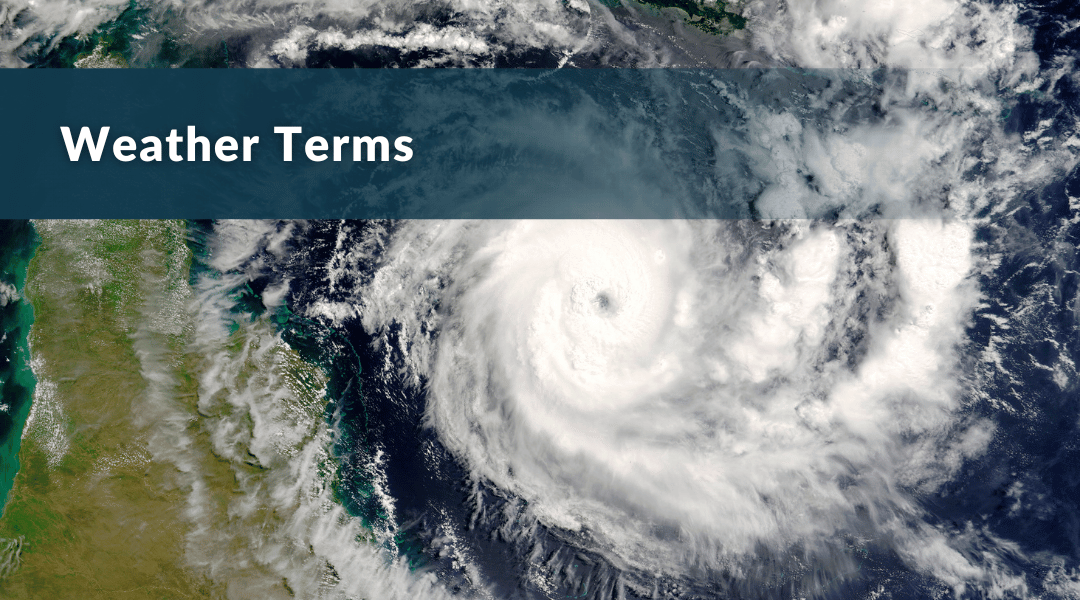
Tropical Disturbance: An organized area of thunderstorms with minimal surface wind circulation. It typically forms over warm ocean waters and can develop into more severe tropical systems like depressions, storms, or hurricanes if conditions such as warm water, low wind shear, and moist air are favorable.
Tropical Depression: A tropical cyclone with maximum sustained winds of 38 mph (62 km/h) or less. It forms from a tropical disturbance and features organized thunderstorms and a defined low-pressure center. It can further intensify into a tropical storm or hurricane under favorable conditions.
Tropical Storm: A tropical cyclone with maximum sustained winds ranging from 39 to 73 mph (63 to 118 km/h). It forms from a tropical depression and features more organized thunderstorms and a well-defined circulation. Tropical storms can further develop into hurricanes under favorable conditions.
Hurricane: A powerful tropical cyclone with maximum sustained winds of 74 mph (119 km/h) or higher. It features a well-defined eye, intense thunderstorms, and spiral rainbands.
Tropical Storm or Hurricane Advisory: Provides information about the storm's location, intensity, movement, and potential impacts. Issued by the National Weather Service (NWS), it offers guidance on necessary precautions and actions for affected areas.
Tropical Storm or Hurricane Watch: Issued by the NWS when tropical storm or hurricane conditions are possible within 48 hours. It’s an alert to residents to begin preparations and stay informed about the storm's progress.
Tropical Storm or Hurricane Warning: Issued by the NWS when tropical storm or hurricane conditions are expected within 36 hours. It indicates an imminent threat and advises residents to complete preparations and take immediate action to protect life and property.
Evacuation Order: An official directive issued by authorities requiring people to leave their homes or an area due to an imminent threat, such as a hurricane, flood, or other disaster. It mandates residents to move to safety and may specify evacuation routes and shelters.
Floodplain: A flat or low-lying area adjacent to a river, stream, or other water body that is prone to flooding.
Flash Flood: A sudden, rapid flooding of low-lying areas, typically caused by intense rainfall from thunderstorms, hurricanes, or tropical storms. Flash floods can occur within minutes or hours of heavy rain and can be extremely dangerous, sweeping away people, cars, and structures with little warning.
Storm Surge: An abnormal rise of water generated by a storm, typically a hurricane, as it moves over coastal areas. Strong winds push water inland, creating a dome of water that can flood coastal regions. Storm surges are often the most dangerous and damaging aspect of hurricanes for coastal communities.
Saffir-Simpson Hurricane Wind Scale: Categorizes hurricanes based on their sustained wind speeds, ranging from Category 1 (74-95 mph) to Category 5 (157 mph or higher). It helps forecasters communicate potential impacts and allows communities to prepare for varying levels of wind damage and storm surge associated with each category.
Saffir-Simpson Hurricane Wind Scale
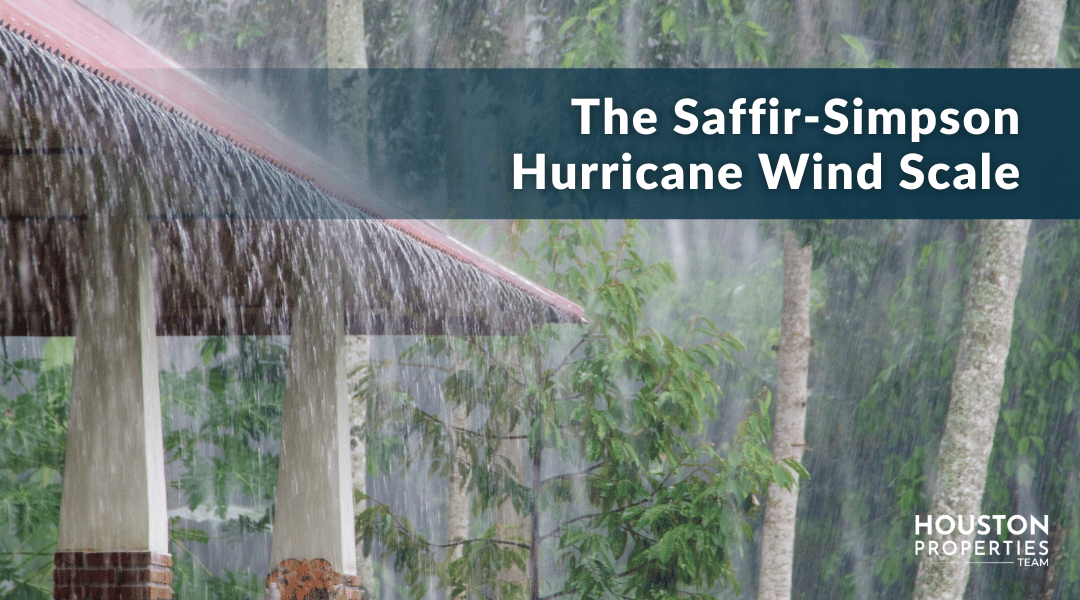
The Saffir-Simpson Hurricane Wind Scale categorizes hurricanes into five levels based on their sustained wind speeds:
Category 1: Winds of 74-95 mph. Causes minimal damage to buildings, but poses significant risk to unanchored mobile homes, trees, and power lines.
Category 2: Winds of 96-110 mph. Results in extensive damage, with considerable risk to mobile homes, trees, power lines, and potential roof and siding damage.
Category 3: Winds of 111-129 mph. Causes devastating damage. High risk of structural damage to small residences, with many trees uprooted and power outages lasting several days to weeks.
Category 4: Winds of 130-156 mph. Catastrophic damage expected. Most trees snapped or uprooted, and power outages lasting weeks to months. High risk of structural failure in many buildings.
Category 5: Winds greater than 157 mph. Catastrophic damage expected. A high percentage of framed homes will be destroyed, with total roof failure and wall collapse. Areas will be uninhabitable for weeks or months.
Best Houston Real Estate Resources
- Houston Texas Zip Code Map | HoustonProperties
- An Ultimate Guide to the Best Active 55+ Communities in Houston
- How To Avoid Buying In Houston's Flooded Zones
- Deer Park Homes For Sale & Real Estate Trends
- Bellavita at Green Tee Homes For Sale & Real Estate Trends
